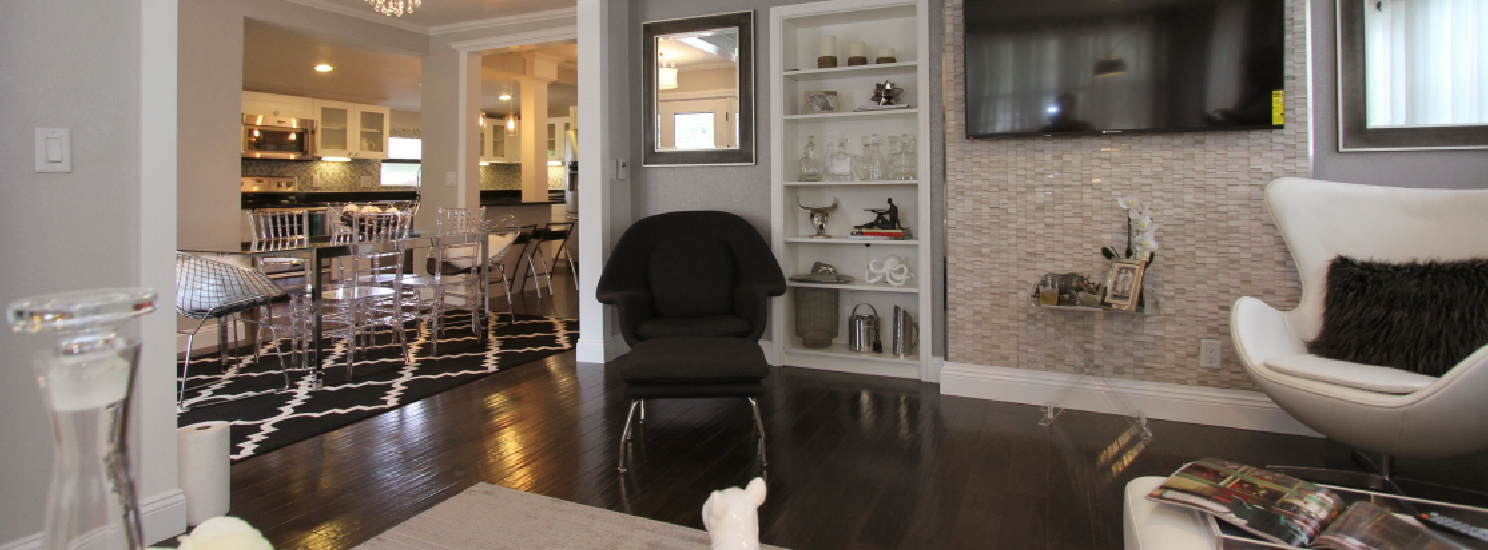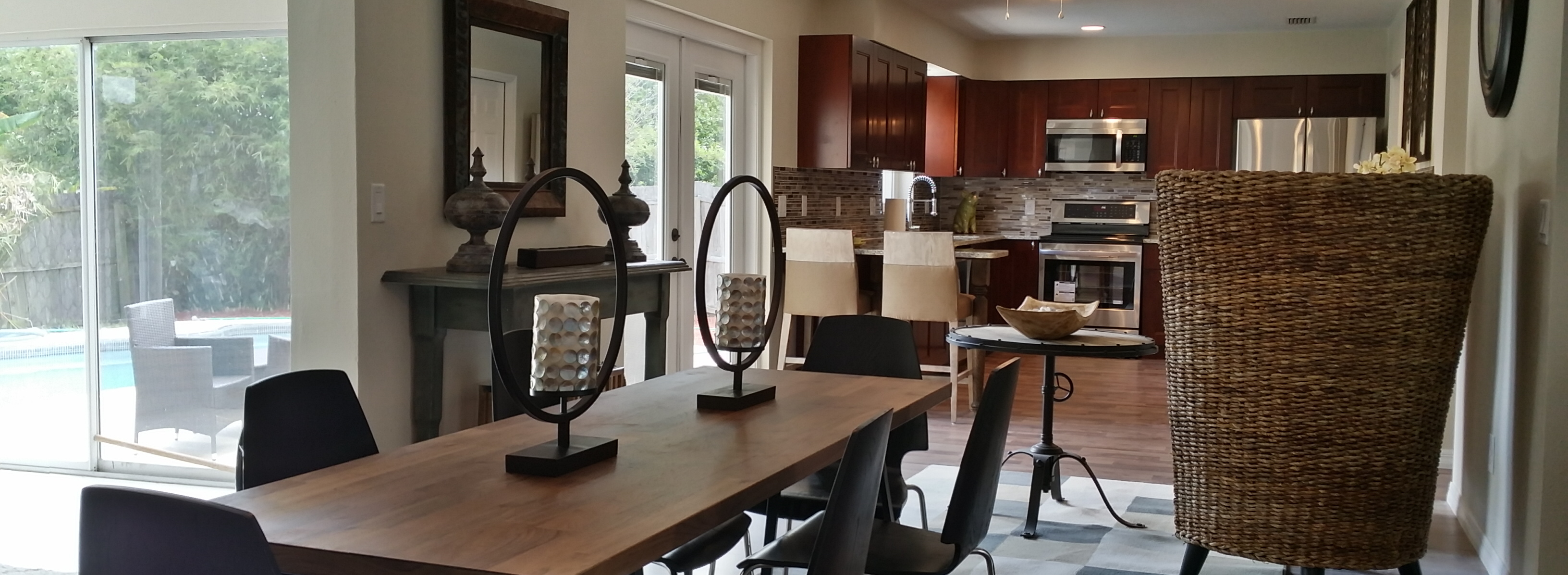
Interior Design
What is the definition of interior design? For many people it means different things so here is my attempt to show you my perspective. For me it is important that a space, especially a room that someone lives in, adheres to a few guiding principles.
Function
The first principle is function. Interior design is not considered art in its purest form. I am talking about the aspect in which art does not have to possess function, but can exist without a pragmatic aspect to its existence. Interior design is always subordinate to the primary function of the room. A bedroom becomes only a bedroom once it offers the opportunity for someone to sleep in it. Otherwise it is a room at most. So whatever we do we have to look at the way the space will be used and take that as the starting point of our approach.
Aesthetics
A room can be functional without a thought being given to the aesthetic aspect of the space. Interior design takes the function and marries it with the aesthetics for a largely enhanced result. Every aspect of our lives are designed and enhanced to provide us with an experience that is in one was or another different than its raw starting point. No product is successful without the consideration of its aesthetic appeal. There are many products that derive its determination of value in large part from the aesthetic aspect. Take a look at movies, fashion and luxury cars. The English Philosopher Alfred North Withead sees aesthetics as a result from the way our mind process patterns. He stated “Art is the imposing of a pattern on experience, and our aesthetic enjoyment is recognition of the pattern.”. So in a sense the enjoyment of aesthetics is more an internal process than an external fixed point. It up to our design to provide order and evoke that emotional response we look for.
Experience
The questions of the visitors experience is one that takes in various aspects and created a subjective experience to the viewer or visitor. So the questions is what is the function, and how does it relate to the visuals to create an experience in the room. How will the interaction be, and how will the room affect the person in it. The experience is ultimately the measuring cup for the success of the design transformation. The room can function and it can be aesthetically pleasing but if the experience is unpleasant no one will consider the design task successful.
Usability
When we analyze the room and its potential properly we can enhance the usability tremendous. We have to identify how we can use the space best. Perhaps there are possibilities that had been overlooked so far. There might be needs that were not there before and there might be changes that would help to bring a dated architectural concept into the new millennium by looking at what today’s consumer demands are. While intercom systems were hot in the 80’s home construction industry, today they merely evoke a nostalgic memory in most people. Being connected means a different thing to the millennials. The generational change brings new aspects of functionality and requirements into the mix. Tiny living is a trend that arrived from the wish for a small carbon footprint and financial independence. Something rarely uttered a few decades ago. Smaller and very small spaces became attractive to a part of the population while other strive for the possession of the ultimate mega mansions. Kitchens get bigger while fewer and fewer kitchens are used at all. The kitchen of the baby boomer youth were small and separate rooms, in which the mother slaved away, apart from the rest of the family. There was a separate family room where most of the family life took place while the formal living quarters were strictly preserved for guests and formal occasions. Today the demand is for open spaces and a more informal space that allows for gathering and entertainment, and the kitchen had become focal point and social hub of these events. So in essence: To make a space usable in the best way we have to identify our target group and the demand our clientele has. We have to cater to this client and see that we match the need and wants and anticipate the use of the space in different ways.
Style
Style is a term that is often used as a qualitative aspect of the visual appeal. If it is ‘stylish’ it is up to today’s expectations, it is esthetically pleasing. But here I am referring more to the historical aspect to the style of an architectural trend or phase. We had different styles in the last century of which some became quite desirable again. Typically we work within one style or a careful mix of only a few, to reach for a design language that allows for individual expression on one side, and for conceptual integrity on the other side. We have to take the architecture of the property into consideration to create a successful design that appears intentional and seamless, rather than an afterthought.. While the Mediterranean inspired style was the hype of Central Floridas 90’s, we have largely moved on to a more urban younger style now. We take inspiration from other decades and let vintage elements enhance the language we are using now. “Everything is fair in love and war” is an old quote that we can apply to the creative expression of interior design. When we design for an individual we can choose to cater to very specific preferences. We can create a very personal and unique experience that will not be tested by the scrutiny of many, but rather be the expression of one mind. Ever since Ralph Waldo Emerson talked about individualism, personal responsibility, and nonconformity in 1830 we take self expression as an important part of our being. Having your surroundings shaped after your own desire is an example of that individuality and interior designers are facilitators in the attempt to create ones own world.
If we cater to a larger audience in the case of commercial or public spaces the situation is different. We take inspiration from a common cultural consent of how our surrounding should be. We reinvent that idea and infuse it with examples and concepts of our cultural self image. We take the “Zeitgeist”, this spirit of a time and place, and condense its essence into a vision that will be as much avant-garde as it is establishment. We walk the tightrope between the world we have been in and the world we are about to enter for the first time. If we are able to embark on this journey and take the visitor with us, showcase a vision how life could be, we have succeeded.
If you are considering the transformation of your space, please feel free to contact me. I am looking forward to hear from you. I would love to see where our mutual journey takes us.
Helene Bonello-Strauss


